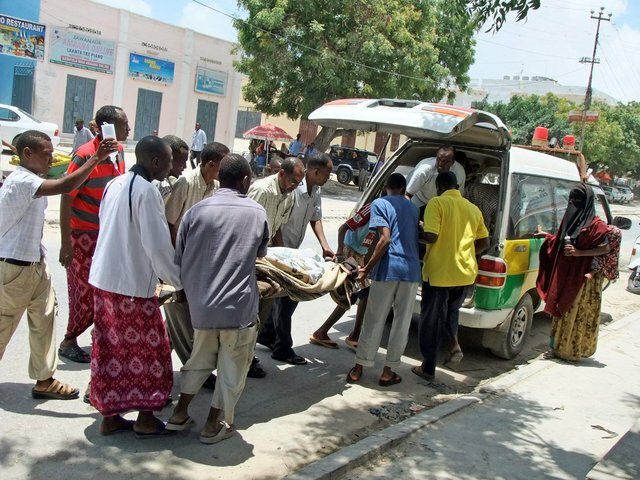 Bartamaha (Mogadishu):- A lull during fierce fighting gave Hassan Mohamud Mohamed time to hire a boy to wash the blood from his vehicle.
Bartamaha (Mogadishu):- A lull during fierce fighting gave Hassan Mohamud Mohamed time to hire a boy to wash the blood from his vehicle.
The break didn’t last long. Mr. Mohamed is an ambulance driver in a city filled with war, and as the boy scrubbed the hatchback of the green-and-yellow checkered minivan, a call came for help.
“Stop!” Mr. Mohamed yelled at the boy, who hadn’t quite finished cleaning. Mr. Mohamed jumped in the driver’s seat. “I’ll be back.”
Ambulance drivers risk their lives to try to save people hit by the mortar fire, artillery shells and random gunfire that have been ricocheting around this crumbling seaside city for almost 20 years. In 2009, two drivers were killed — one when a mortar round landed on an ambulance and a second when another ambulance was hit by tank fire.
The city lurches between quiet periods, when shoppers fill markets, and heavy warfare, during which no place is entirely safe. Since Oct. 2, at least 23 people have been killed and almost 90 wounded, Mr. Mohamed’s ambulance service said.
Mogadishu’s Lifeline Africa Ambulance Service has seven vehicles and 11 staffers who are each paid $100 a month. The ambulances are austere, carrying only stretchers, bandages and blood-clotting medicine. The staff is made up of drivers and their assistants, none with any formal medical training.
On a recent Saturday — not a particularly busy day by Mogadishu standards — an Associated Press writer and photographer accompanied Mr. Mohamed on his run.
As the ambulance approached a government checkpoint, the lone soldier on guard pointed the barrel of his gun at the vehicle.
“Is this a real ambulance or the suicide bombers’ one?” the alert and suspicious soldier asked Mr. Mohamed. For nearly 10 minutes, he prevented Mr. Mohamed from moving before deciding it was a real ambulance.
Twenty minutes later, Mr. Mohamed pulled up to a woman screaming outside a five-room bungalow made of cheap bricks.
========================
Source:- Washingtontimes.



